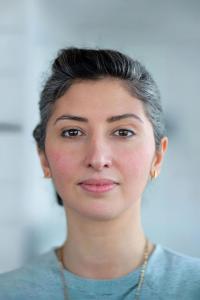Rudy Behnia, PhD
- Assistant Professor of Neuroscience

Overview
Academic Appointments
- Assistant Professor of Neuroscience
Research
Animals face complex environments teeming with sensory stimuli. Light, odor, taste, sound and touch need to be properly encoded in the brain to allow them to understand their natural surrounding and adapt their behavior to survive and thrive. Light in particular is an essential cue for many diurnal animals: it is sensed in the eye by photoreceptors; highly specialized neurons that detect photons. How do neuronal circuits in the brain accurately interpret these photoreceptor signals to extract a variety of features of the visual scene, such as object shape, color, and depth of field? Using the fruit fly model system, we are teasing apart the neuronal circuits underlying two aspects of vision: motion detection and color discrimination. We use a variety of complementary techniques: in vivo single cell patch-clamp recordings, two-photon activity-imaging, optogenetic as well as behavioral paradigms. The long-term goal of my laboratory is to understand how the properties of specific neuronal types and their connectivity within sensory circuits allow for the computations necessary for sensory perception.
Research Interests
- Sensory Physiology
- Synapses and Circuits
- Systems and Circuits
Selected Publications
Behnia R and Desplan C. Visual circuits in flies: Beginning to see the whole picture. Curr Op Neurobiol. 34, 125-132 (2015).
Behnia R, Clark DA, Carter AG, Clandinin TR and Desplan C. Processing properties of Drosophila ON and OFF pathway for motion detection. Nature. 512, 427-30 (2014).
Seong HJ, Behnia R and Carter AG. The impact of subthreshold membrane potential on synaptic responses at individual spines in the basal dendrites of layer 5 pyramidal neurons. J Neurophysiol. 111, 1960-72 (2014).
Johnston RJ Jr, Otake Y, Sood P, Vogt N, Behnia R, Vasiliauskas D, McDonald E, Xie B, Koenig S, Wolf R, Cook T, Gebelein B, Kussell E, Nakagoshi H and Desplan C. Interlocked feedforward loops control cell-type-specific Rhodopsin expression in the Drosophila eye. Cell. 145, 956-68 (2011).
Johansen JP, Hamanaka H, Monfils MH, Behnia R, Deisseroth K, Blair HT and LeDoux JE. Optical activation of lateral amygdala pyramidal cells instructs associative fear learning. Proc Natl Acad Sci. 107, 12692-7 (2010).
Behnia R, Barr FA, Flanagan JJ, Barlowe C and Munro S. The yeast orthologue of GRASP65 forms a complex with a coiled-coil protein that contributes to ER to Golgi traffic. J Cell Biol. 176, 255-61 (2007).
Behnia R and Munro S. Organelle identity and the signposts for membrane traffic. Nature. 438, 597-604 (2005).
Behnia R, Panic B, Whyte JR and Munro S. Targeting of the Arf-like GTPase Arl3p to the Golgi requires N-terminal acetylation and the membrane protein Sys1p. Nature Cell Biol. 6, 405-13 (2004).